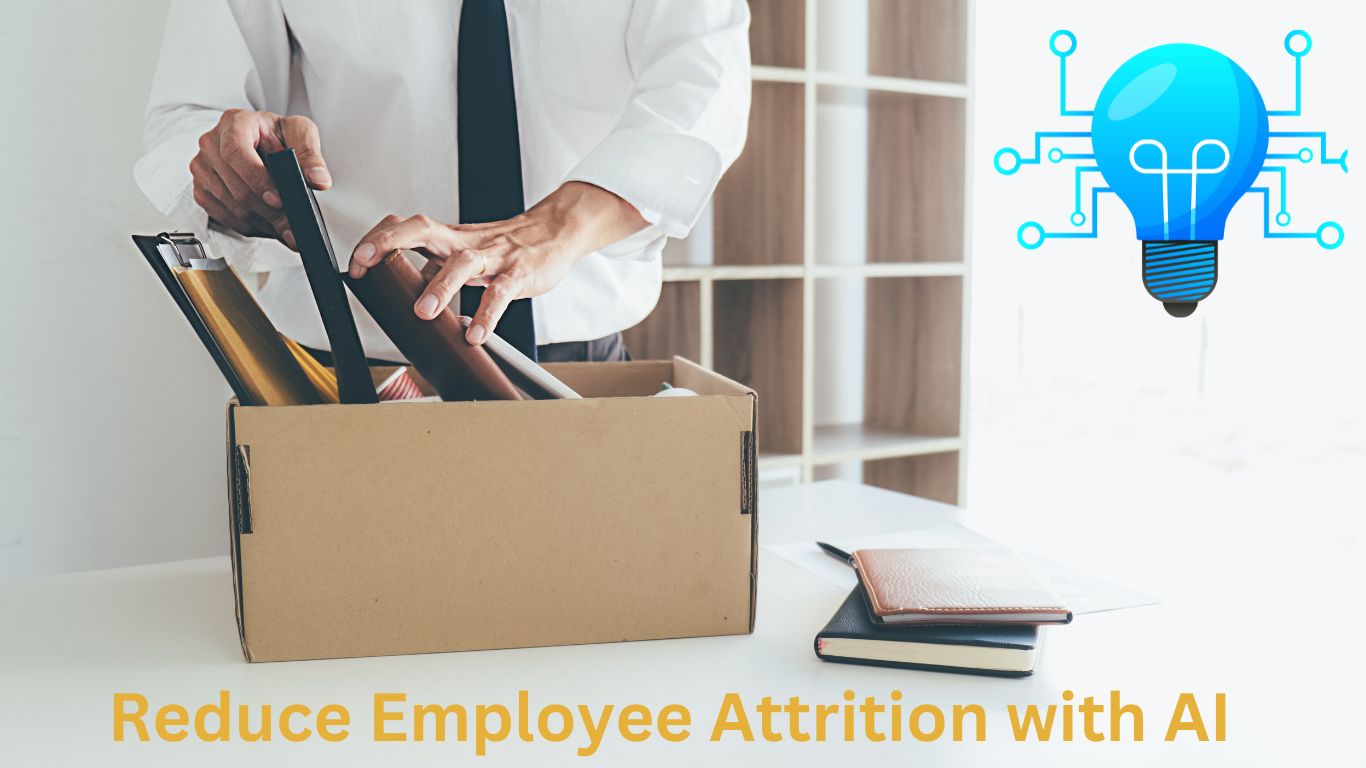AI is usually equated with job losses and fewer opportunities. However, the world today is still not overtaken by AI and it needs humans. And getting the right employees is a challenge. Keeping the employees within the company, aka employee retention is a bigger concern in many organizations. High employee turnover not only incurs significant costs but also impacts productivity, morale, and overall organizational performance.
With better pay packages, and opportunities employee loyalty is shifting sands. Companies invest millions in curtailing the attrition rate. This is where Artificial Intelligence (AI) can be used to assist in reducing the employee attrition rate. With powerful AI tools companies have more means to address this challenge effectively.
Employee attrition is usually due to some of the following reasons such as dissatisfaction, lack of growth opportunities, poor work-life balance, etc. These can be mitigated through strategic interventions at the right time, facilitated by AI tools and technologies. Here’s how AI can be applied to play a positive role in reducing employee turnover:
- Early Flags through Predictive Analysis:
Organizations knowingly or unknowingly collect vast amounts of employee data, i.e. employee details, employment history, academics, performance and feedback, participation in the organizational activities, etc. This data can be used to analyze the trend and use it for predictive analytics. It will help in raising early flags and a timely intervention can be made to address the growing concerns of employees and thus retain the talent. - Develop tailored L&D Plans:
Usually, the L&D departments of companies are not that great (although companies think it’s the best). Generic trainings are conducted for the employees which are usually sparsely attended or soon forgotten. Companies can bring AI flavor to their learning and development platforms to assess employees’ interests, skills, and career aspirations. By doing so tailor-made learning and development programs can be made for each employee rather than generic trainings. This will enhance employee interest, job satisfaction and aid in retention. - Better Recruitment Strategy:
Recruitment is also undergoing significant changes with AI-enabled platforms and tools. Organizations need to utilize the AI-powered talent searches which will help with the hiring process. Not only the hard skills but also soft skills, culture match, stability ratio, etc. can be gauged during the recruitment. - Enhanced Onboarding Experience:
The onboarding experience can also be enhanced through more interactive sessions, targeted videos, and insights into the job. AI chatbots can be used to aid the new joiners get acquainted with the systems and answering the usual questions about the job and the company. - Employee Engagement and Feedback:
Sentiment analysis tools can be used to gauge employee sentiments. Other AI-powered tools like chatbots can enable real-time engagement with employees, and help the organizations to gather feedback from time to time. This can help in identifying and addressing the concerns faster and promote a culture of continuous improvement. By listening to employee voices and taking action on their feedback, companies can enhance job satisfaction and loyalty, reducing the likelihood of attrition. - Workforce & Succession Planning:
AI algorithms can analyze workforce data to forecast future talent needs and identify potential gaps in skills or leadership pipelines. This enables the organizations to do succession planning and proactive workforce planning to handle the additional work in the future. Often when a project rotation is done the new team members are grappled with the unknowns. AI tools can aid in building comprehensive documentation, and automating several areas which can help team members focus on the essentials. Any member leaving doesn’t add the load to the existing team members and work can continue smoothly. Thus organizations can showcase a commitment to employee growth and retention, thereby increasing job stability and satisfaction. - Wellness Initiatives and Work-Life Balance:
AI-powered wellness applications can monitor employees’ stress levels, workloads, and work-life balance indicators to prevent burnout and promote well-being. A supportive environment where employees’ well-being is equally important can go a long way in fostering loyalty and happiness amongst the workforce. Subsequently, it can help reduce attrition and improve overall productivity and performance. Furthermore, a happy work culture with a work-life balance attracts talent as well and can aid in recruitment. - Better Decision-Making and Inclusive Culture:
Personal bias often creates an unhealthy work environment. It could be inadvertent but is perceived differently by the aggrieved party. AI algorithms can help reduce bias in decision-making processes. Performance reviews, promotions, feedback, etc. can be made unbiased to an extent. Any anomaly in decision-making or reviews can be flagged by the system and can be reported for manual review. This will help promote a more inclusive workplace. Fairness and transparency will always help the organizations in terms of growing trust from the employees. Employees will feel more valued, respected, and represented thus reducing the employee churn.
Artificial Intelligence (AI) doesn’t need to be feared. When used positively it can offer a multitude of opportunities for organizations to address employee attrition effectively as a good use case. Organizations will always need good employees and will want to reduce attrition. By leveraging AI-driven insights and interventions across the employee lifecycle, companies can create a workplace where talent feels valued, supported, and empowered to thrive. Ultimately, reducing attrition not only benefits the company financially but also encourages a positive organizational culture where employees are motivated to stay and grow.


Leave a Reply